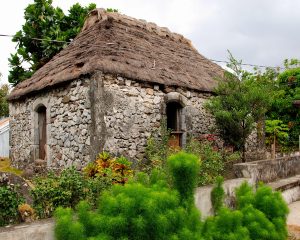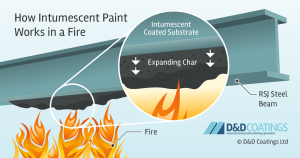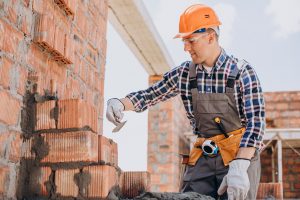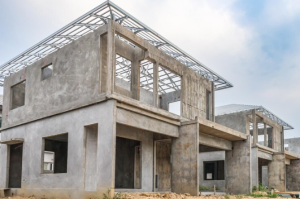Fire incidents are a fairly common sight to see in the Philippines. In 2022, the Bureau of Fire Protection (BFP) recorded 13,029 fire incidents in the country which left properties and human life in ashes. For this reason, it is important to use fireproof materials when building any structure, especially residential structures such as houses.
Ensuring the safety of houses starts with the planning or renovation where it is important to choose the right materials with fireproof or fire retardant qualities. For this reason, we bring you the top 6 fireproof construction materials that will help in keeping fire incidents at bay.
Top 6 Materials That You Can Use to Fireproof Your Home
Rammed earth

Source: LightStone MCM Philippines
Rammed earth is a building technique that involves ramming layers of sand, gravel, clay, and silt into formwork or frame. It is considered as one of the oldest building methods in the world.
Rammed earth is generally considered to be fire resistant because it is dense and compact. Because of its density, it does not have any air cavities which can promote combustion. This makes rammed earth more fire-resistant compared to lightweight construction materials like wood.
As a building material, it has many advantages. It is relatively low-cost, environment friendly, has good thermal mass properties, is durable, and can resist earthquakes and other natural disasters.
It is also important to recognize its limitations. These limitations include its labor-intensive production and ill suitability for areas with high moisture or rainfall, which makes it prone to erosion.
Stonework
Stonework is a non-combustible material made from natural or manufactured stone. Its fire-resistant qualities are because of its inherent qualities, such as its density and solidness, which are not easily penetrated by fire; and low thermal conductivity, so it does not heat very well. Because of this, any material on the other side of the stone wall will not ignite.
Stonework is installed with fire-resistant mortar, which further enhances the overall fire-resistance of stonework.
Stonework is a suitable construction material that offers significant advantages and unique disadvantages. Its benefits include durability, strength, and weather resistance, adds an elegant and natural look to a house, great insulation, and low maintenance. Its disadvantages include higher costs, heavy weight, complex installation, and possibly limited design flexibility.
Here is an example of a house built with stonework:

Houses built with stonework are common in Ivatan, Batanes.
Intumescent coatings
Intumescent coatings are paints that serve as a passive fire protection measure. It works by expanding and producing a carbonaceous char/foam which insulates underlying materials from the heat of the fire. These fire-resistant coatings typically comprise several layers of paint or varnish (primer, basecoat, and topcoat) and can provide up to 120 minutes of protection.
This fire-resistant coating has pros and cons you have to consider. Its pros include easy application, doesn’t let moisture inside if applied properly, and helping mitigate the risk of corrosion. Unfortunately, it has its cons, such as a greater long-term maintenance, decreased efficacy and longevity if not applied properly, producing an orange peel-like texture, and you would need a specialized professional to get the job done.
Here is an excellent diagram that shows how intumescent coating works:

Source: D&D Coatings
Fire-resistant glass

Source: AIS Glass
Windows made with normal glass are potential fire hazards. Even without direct contact with flames, normal glass windows will shatter because of the intense heat. It also risks igniting flammable items inside the home when the intense heat enters through the shattered glass window.
Fortunately, fire-resistant windows are an added layer of protection against house fires. Fire-resistant glass is specially laminated glass that can withstand high temperatures. Installing this for your windows can give you enough time to act or call for help while they contain fires within a specific location. On top of this, this kind of glass is more durable because it resists high-pressure loads.
Examples of fire-resistant glasses which also offer visibility include dual-paned glass windows (2x stronger than normal glass) and tempered glass (4x stronger than normal glass).
Aside from visibility and fire resistance, fire-resistant glass can also help you relax better because it can cut up to 49dB of noise.
Although it is important to take note that this is a pricier material compared to normal glass.
Clay Bricks

Clay bricks are fire resistant because of their composition and manufacturing process. During its manufacturing process, clay is shaped into a brick and is fired at temperatures ranging from 800°C to 1200°C (1472°F to 2192°F). This process causes clay particles to fuse, making them solid and dense that is highly resistant to heat and fire. Besides that, bricks are non-combustible and can withstand high temperatures without melting or releasing toxic fumes.
On top of their fire-resistant properties, clay bricks are more resistant to wear and tear moisture, insects, rot, warping, and shrinking. This is especially good for areas with extreme weather or seismic activity.
It is important to take note that bricks have significant downsides you need to consider. These include higher costs, heavy weight, limited design options, requires skilled labor, time-consuming installation, and the manufacturing process may cause a significant environmental impact.
Concrete

Concrete provides the best fire resistance among the items in this list. It does not burn, cannot be set on fire, and does not emit toxic fumes, smoke, or drip molten particles when exposed to fire.
Concrete comprises three major components: cement, water, and aggregates, such as sand or gravel. When exposed to fire, the water in the cement reacts with the heat to form a layer of calcium silicate hydrate (CSH) gel. This gel layer acts as an insulating barrier that protects the inner layers of the concrete from heat and prevents it from cracking or spilling.
Besides the CSH layer, the density and solidness of concrete contribute to the concrete’s fire resistance. Concrete has a high thermal mass, meaning it can absorb and store a large amount of heat without significantly raising its temperature. These qualities help prevent the spread of fire by slowing down its progression.
Other advantages of using concrete include durability, resistance to wear and tear, low maintenance, and versatility.
Its downsides include relatively high cost, heavy weight, cracking, and potential negative effects on the environment.
Building a fire-resistant home guarantees not only the safety of those living within it but also others by helping slow the spread of fire to other houses. Construction professionals and regular people must keep these 6 fire-resistant materials in mind when building a house.
References:
- Caliwan, C. L. (2022, December 28). BFP records 13K fire incidents for 2022. Philippine News Agency. https://www.pna.gov.ph/articles/1191573
- Fire. (n.d.). https://sustainableconcrete.org.uk/Sustainable-Concrete/Sustainable-Concrete/Fire#:~:text=Concrete%20provides%20the%20best%20fire,particles%20when%20exposed%20to%20fire.
- Srivastava, A. (2023, January 27). Types of Masonry Construction: Advantages & Disadvantages. https://www.ny-engineers.com/blog/masonry-construction-advantages-and-disadvantages#:~:text=These%20general%20advantages%20apply%20for,the%20building%20and%20its%20occupants.
- A., & A. (2022, February 2). How can fire resistant glass improve the safety of your building? https://www.aisglass.com/fire-resistant-glass-improve-safety-building/#:~:text=Fire%20resistant%20glass%20is%20a,contained%20within%20a%20specific%20location.









